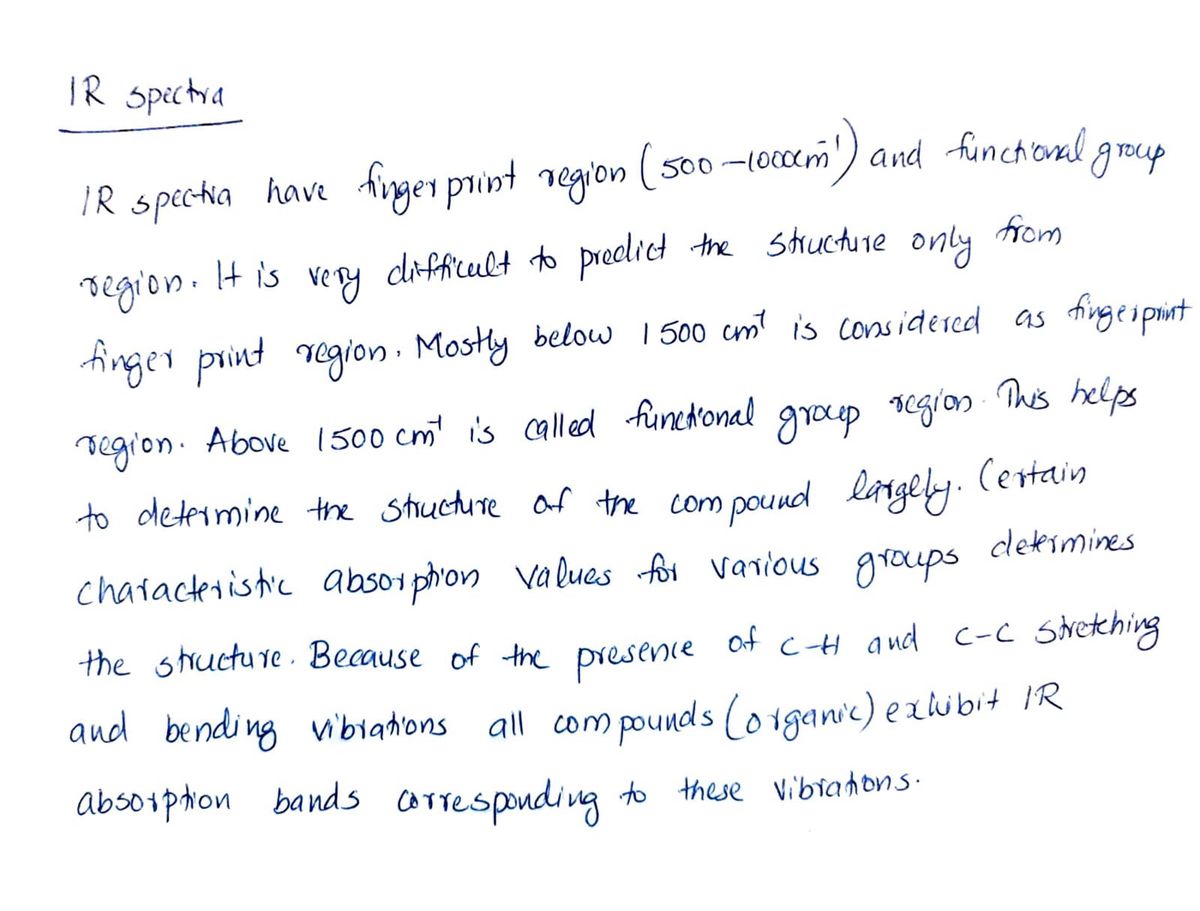All organic compounds have IR absorptions because of C-H and C-C stretching and bending vibrations. For each of the following compounds, identify the additional bond-stretching vibrations that should be observed. Using Figure 21.14 as a guide, identify regions of the IR spectrum where you would expect to see characteristic absorptions for each compound. (a) 2-propanol (b) propanoic acid (c) phenylethyne (d) 1-hexene (e) 4-methylphenylamine (f) benzonitrile
All organic compounds have IR absorptions because of C-H and C-C stretching and bending vibrations. For each of the following compounds, identify the additional bond-stretching vibrations that should be observed. Using Figure 21.14 as a guide, identify regions of the IR spectrum where you would expect to see characteristic absorptions for each compound. (a) 2-propanol (b) propanoic acid (c) phenylethyne (d) 1-hexene (e) 4-methylphenylamine (f) benzonitrile
Chemistry
10th Edition
ISBN:9781305957404
Author:Steven S. Zumdahl, Susan A. Zumdahl, Donald J. DeCoste
Publisher:Steven S. Zumdahl, Susan A. Zumdahl, Donald J. DeCoste
Chapter1: Chemical Foundations
Section: Chapter Questions
Problem 1RQ: Define and explain the differences between the following terms. a. law and theory b. theory and...
Related questions
Question
I need help identifying regions of ir spectrum and answer the quehstion

Transcribed Image Text:EXERCISE
All organic compounds have IR absorptions because of C-H and C-C
stretching and bending vibrations. For each of the following compounds,
identify the additional bond-stretching vibrations that should be observed.
Using Figure 21.14 as a guide, identify regions of the IR spectrum where you
would expect to see characteristic absorptions for each compound.
(a) 2-propanol
(b) propanoic acid
(c) phenylethyne
(d) 1-hexene
(e) 4-methylphenylamine
(f) benzonitrile
Answer
(a) 2-propanol (O-H, 3650-2500 cm-'; C-O, 1300-1000 cm-1)
(b) propanoic acid (O-H, 3650–2500 cm-; C=O, 1850-1650 cm-1 C-O,
1300–1000 cm-1)
(c) phenylethyne (C=C, 2250–2100 cm-'; C=C, 1680–1440 cm-1)
(d) 1-hexene (C=C, 1680–1440 cm-1)
(e) 4-methylphenylamine (N-H, 3550–3150 cm-1; C=C, 1680–1440 cm-1)
(f) benzonitrile (C=N, 2280-2200 cm-1; C=C, 1680-1440 cm-1)
Expert Solution
Step 1

Step by step
Solved in 5 steps with 5 images

Knowledge Booster
Learn more about
Need a deep-dive on the concept behind this application? Look no further. Learn more about this topic, chemistry and related others by exploring similar questions and additional content below.Recommended textbooks for you

Chemistry
Chemistry
ISBN:
9781305957404
Author:
Steven S. Zumdahl, Susan A. Zumdahl, Donald J. DeCoste
Publisher:
Cengage Learning

Chemistry
Chemistry
ISBN:
9781259911156
Author:
Raymond Chang Dr., Jason Overby Professor
Publisher:
McGraw-Hill Education

Principles of Instrumental Analysis
Chemistry
ISBN:
9781305577213
Author:
Douglas A. Skoog, F. James Holler, Stanley R. Crouch
Publisher:
Cengage Learning

Chemistry
Chemistry
ISBN:
9781305957404
Author:
Steven S. Zumdahl, Susan A. Zumdahl, Donald J. DeCoste
Publisher:
Cengage Learning

Chemistry
Chemistry
ISBN:
9781259911156
Author:
Raymond Chang Dr., Jason Overby Professor
Publisher:
McGraw-Hill Education

Principles of Instrumental Analysis
Chemistry
ISBN:
9781305577213
Author:
Douglas A. Skoog, F. James Holler, Stanley R. Crouch
Publisher:
Cengage Learning

Organic Chemistry
Chemistry
ISBN:
9780078021558
Author:
Janice Gorzynski Smith Dr.
Publisher:
McGraw-Hill Education

Chemistry: Principles and Reactions
Chemistry
ISBN:
9781305079373
Author:
William L. Masterton, Cecile N. Hurley
Publisher:
Cengage Learning

Elementary Principles of Chemical Processes, Bind…
Chemistry
ISBN:
9781118431221
Author:
Richard M. Felder, Ronald W. Rousseau, Lisa G. Bullard
Publisher:
WILEY